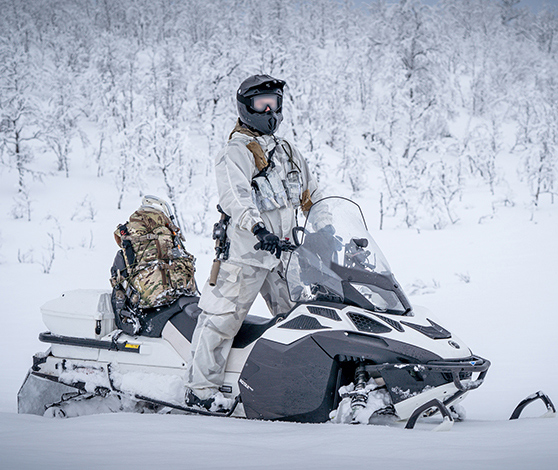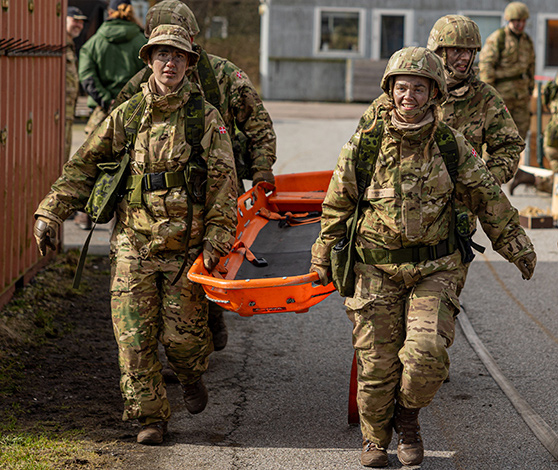Nyheder
Forlig
Døgnrapport
Arrangementer
Følg Forsvaret
Forsvarets arealer
Publikationer

Det første af de systemer der skal beskytte befolkningen, kritisk infrastruktur og militære mål mod trusler fra luften er på plads i Danmark.
Forsvaret håndhæver Danmarks og Rigsfællesskabets suverænitet og er en del af samfundets samlede beredskab. Forsvaret bidrager til international konfliktforebyggelse og deltager i fredsbevarende og fredsskabende indsatser, når Folketinget beslutter at anvende militær ekspertise og kapacitet.
Forsvaret løser opgaver i Danmark, i Rigsfællesskabet og udsendt i internationale missioner. Forsvaret råder over Hæren, Søværnet og Flyvevåbnet.
Forsvaret hævder kongeriget Danmarks suverænitet i hele Rigsfællesskabet. Arktisk Kommando har ansvaret for et område fra Færøerne i øst til farvandene omkring Grønland i nord og vest. Opgaverne omfatter det militære forsvar, men Forsvaret støtter også med en lang række opgaver af mere civil karakter som eftersøgning og redning, fiskeriinspektion, miljøovervågning og forureningsbekæmpelse.

Slædepatruljen Sirius gennemfører overvågning og suverænitetshævdelse i verdens største nationalpark i Nordøstgrønland. Patruljen varetager også politimyndigheden i nationalparken. Foto: Søværnet
Vinterudgaven af Honnør 2025 er sendt ud til Forsvarets ansatte. Læs magasinet her.

Forsvaret er en af Danmarks største og mest alsidige arbejdspladser og uddannelsesinstitutioner. Klik dig videre til information om værnepligt, uddannelse, karriereveje og jobmuligheder i Forsvaret.

Det kræver mental styrke og stålfast vilje at komme igennem uddannelsen til soldat ved Frømandskorpset eller Jægerkorpset. Der stilles også ekstraordinære krav ved mange andre uddannelser i Forsvaret. Til gengæld bliver du en af de bedste på dit område. Foto: Christian Sundsdal / Forsvaret

Værnepligt kan være en kort oplevelse, der flytter dig for altid. Eller en indgang til utallige muligheder på en af Danmarks største og mest alsidige arbejdspladser. Foto: Rebekka Gimm / Forsvaret